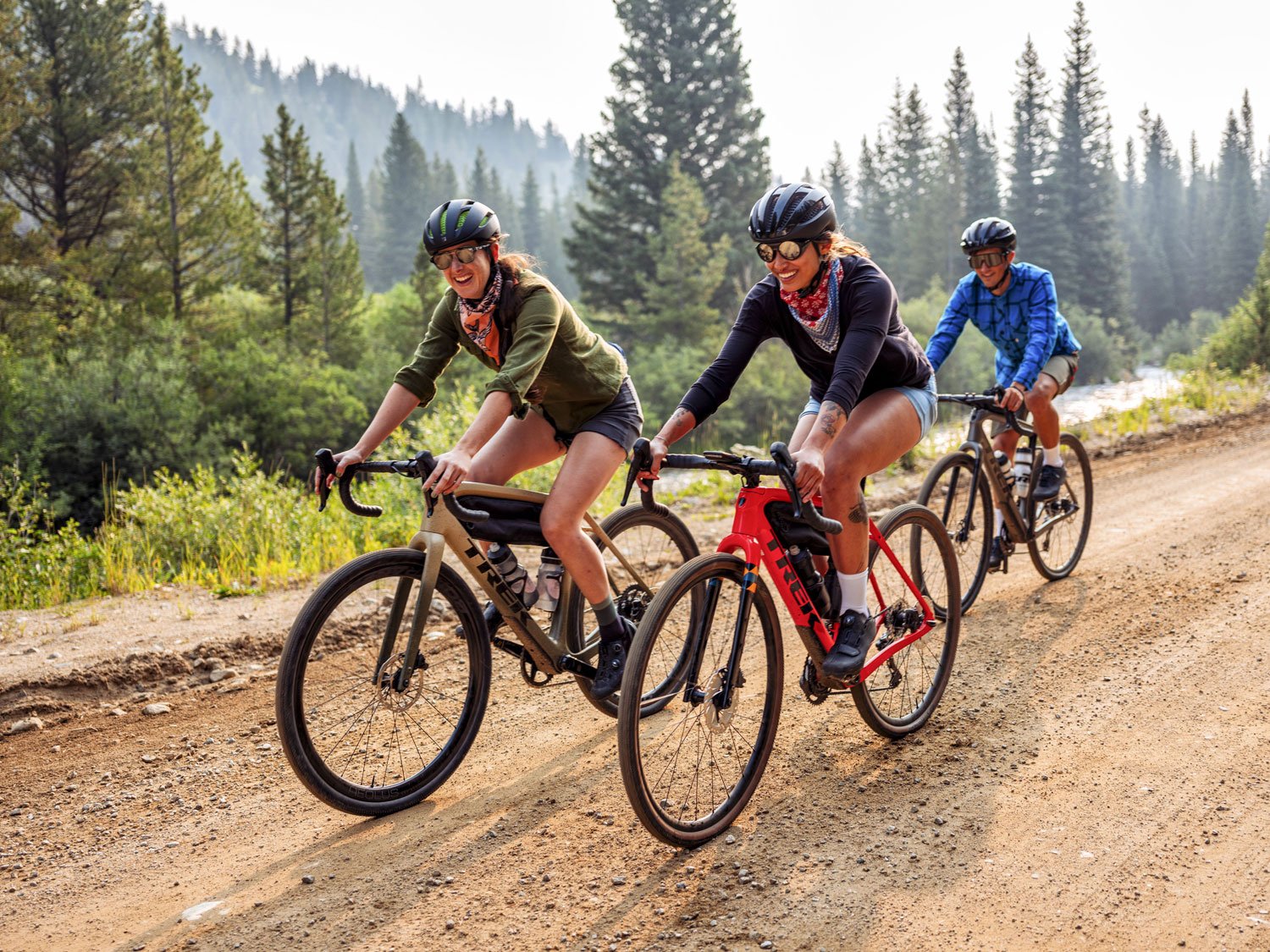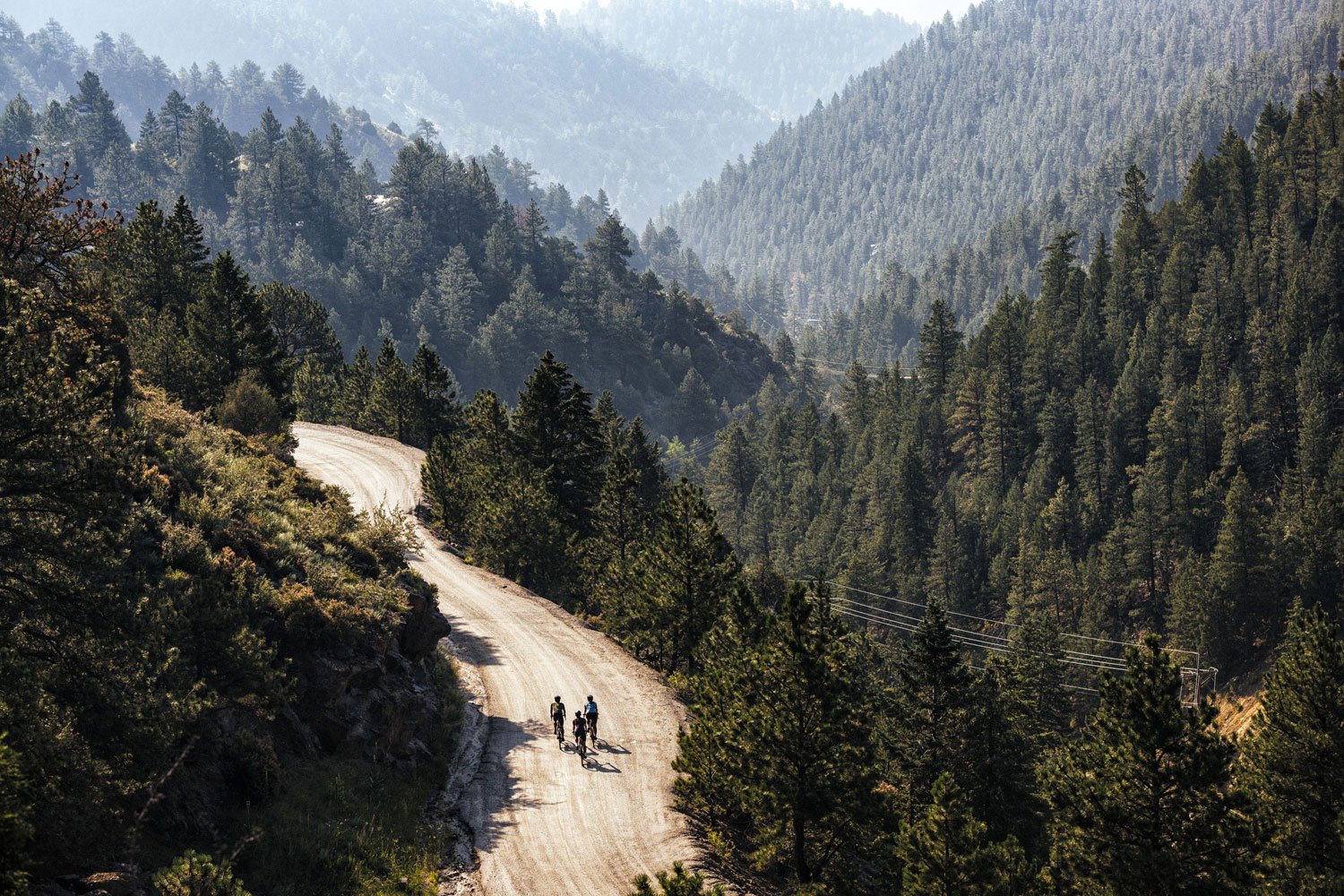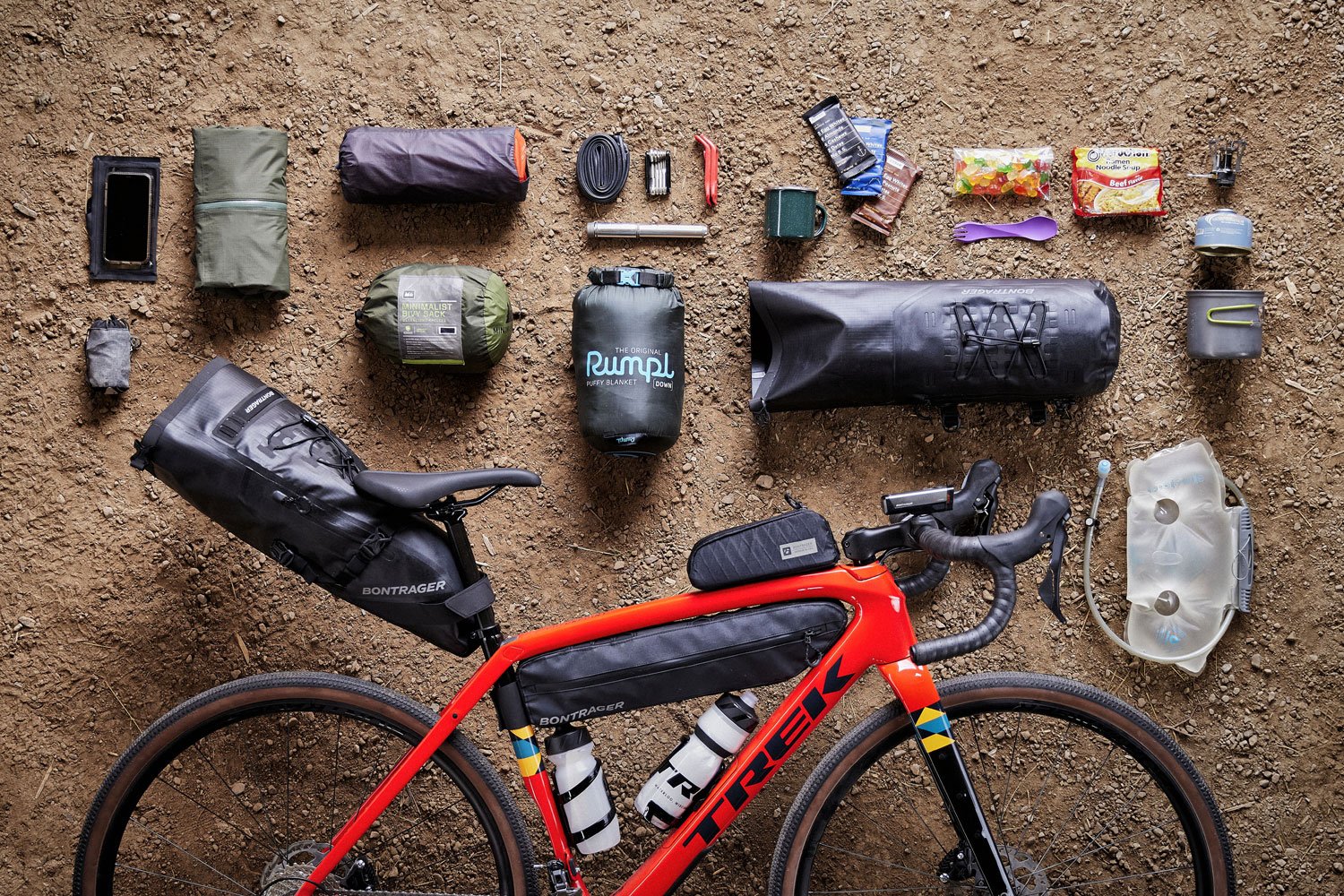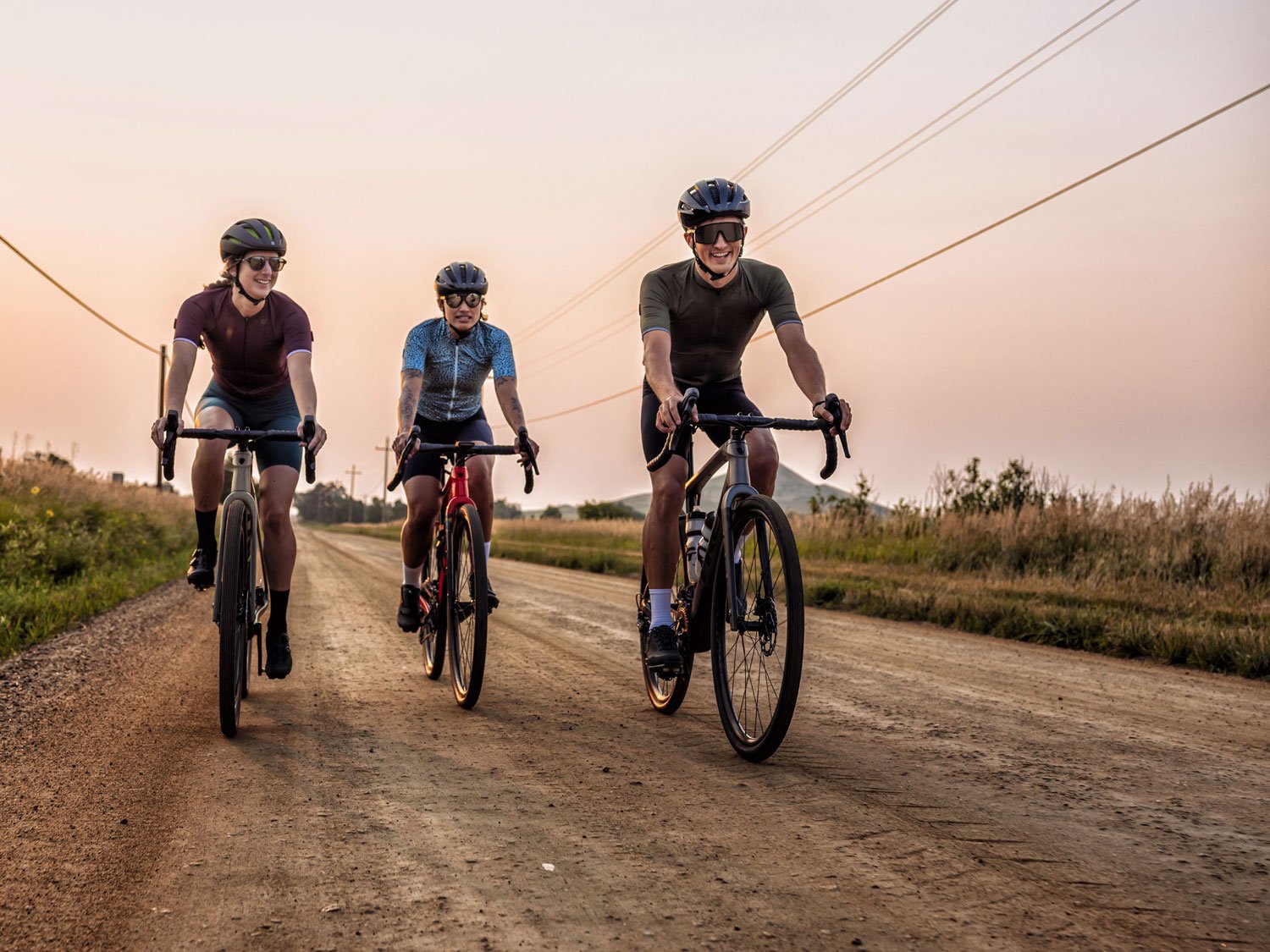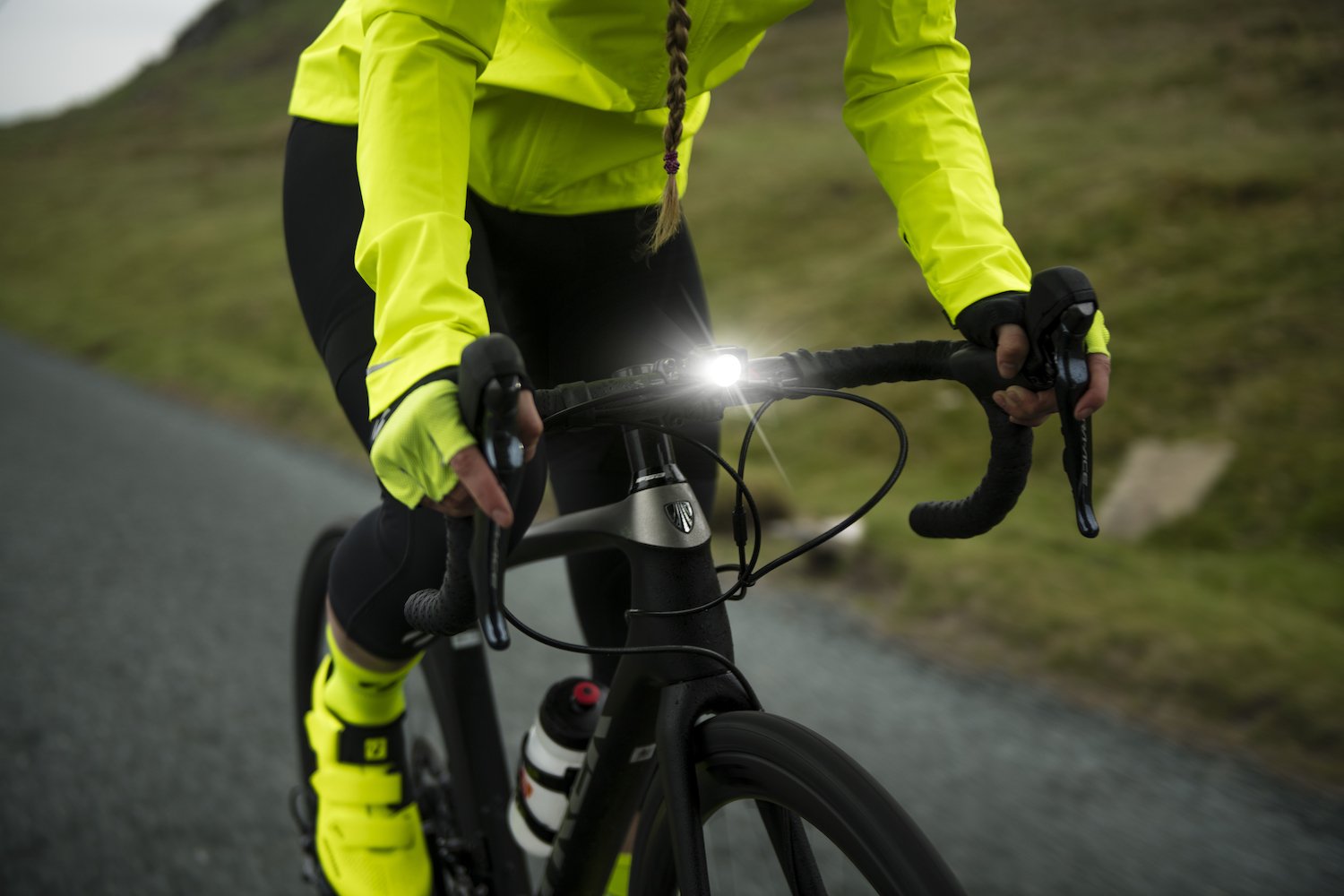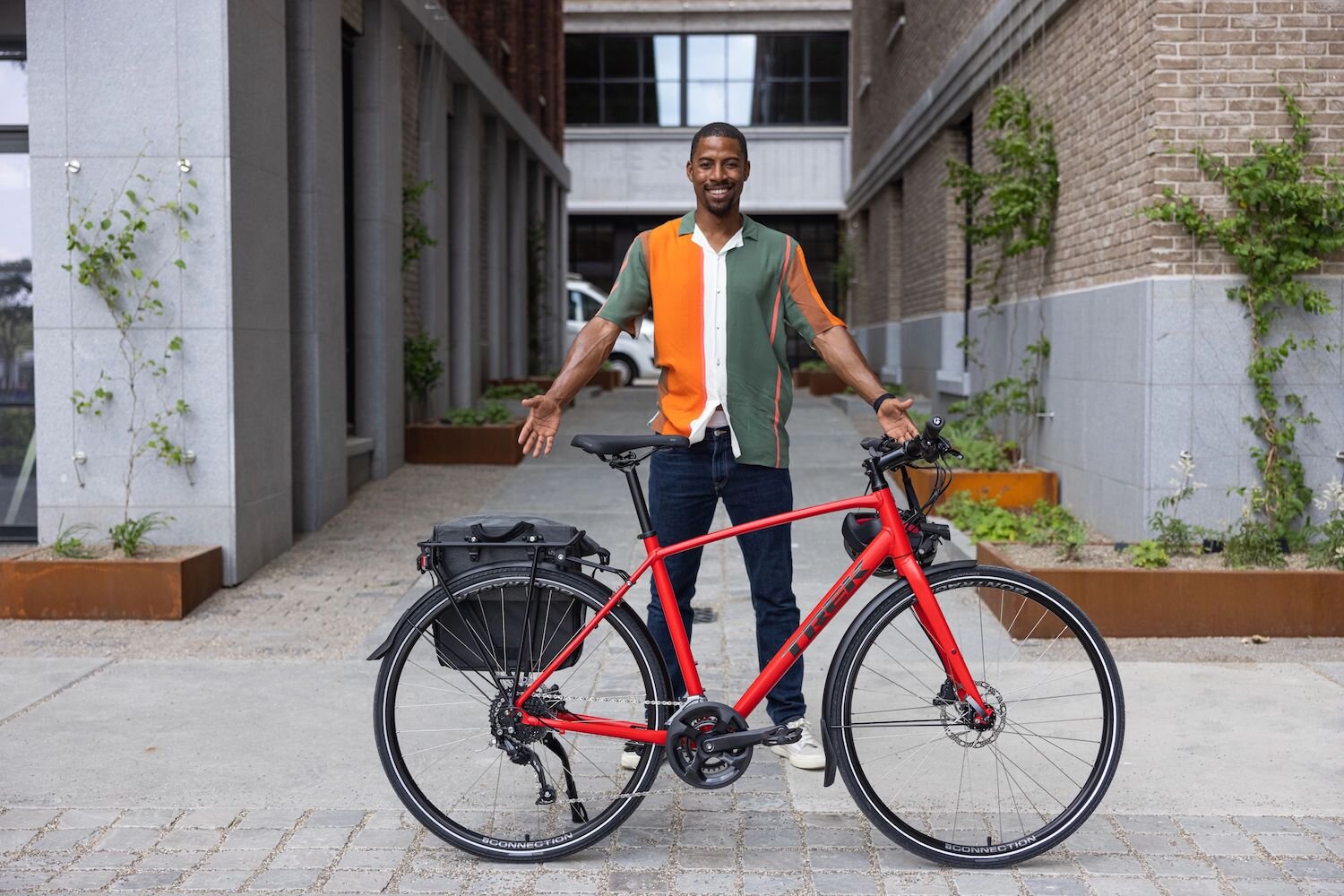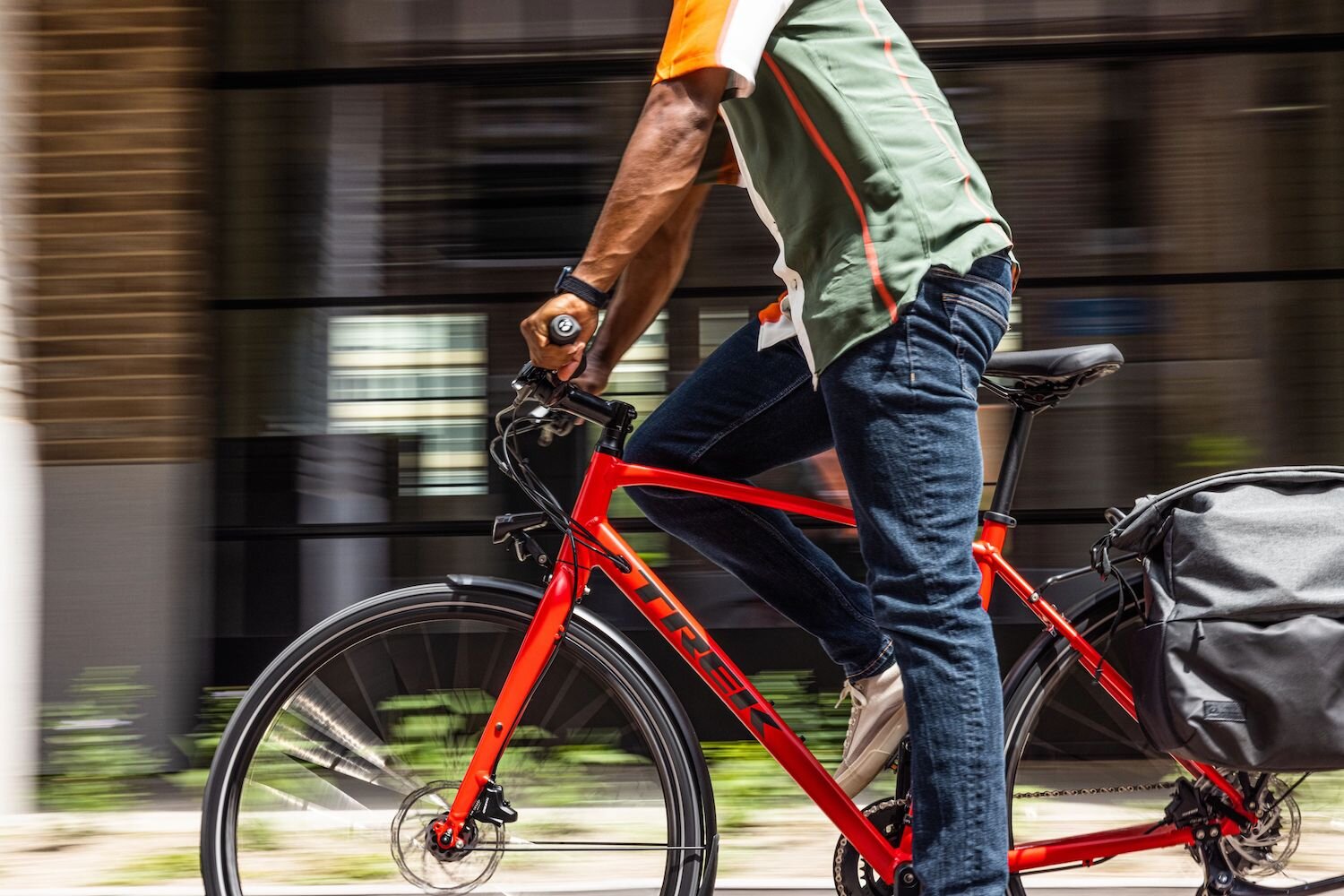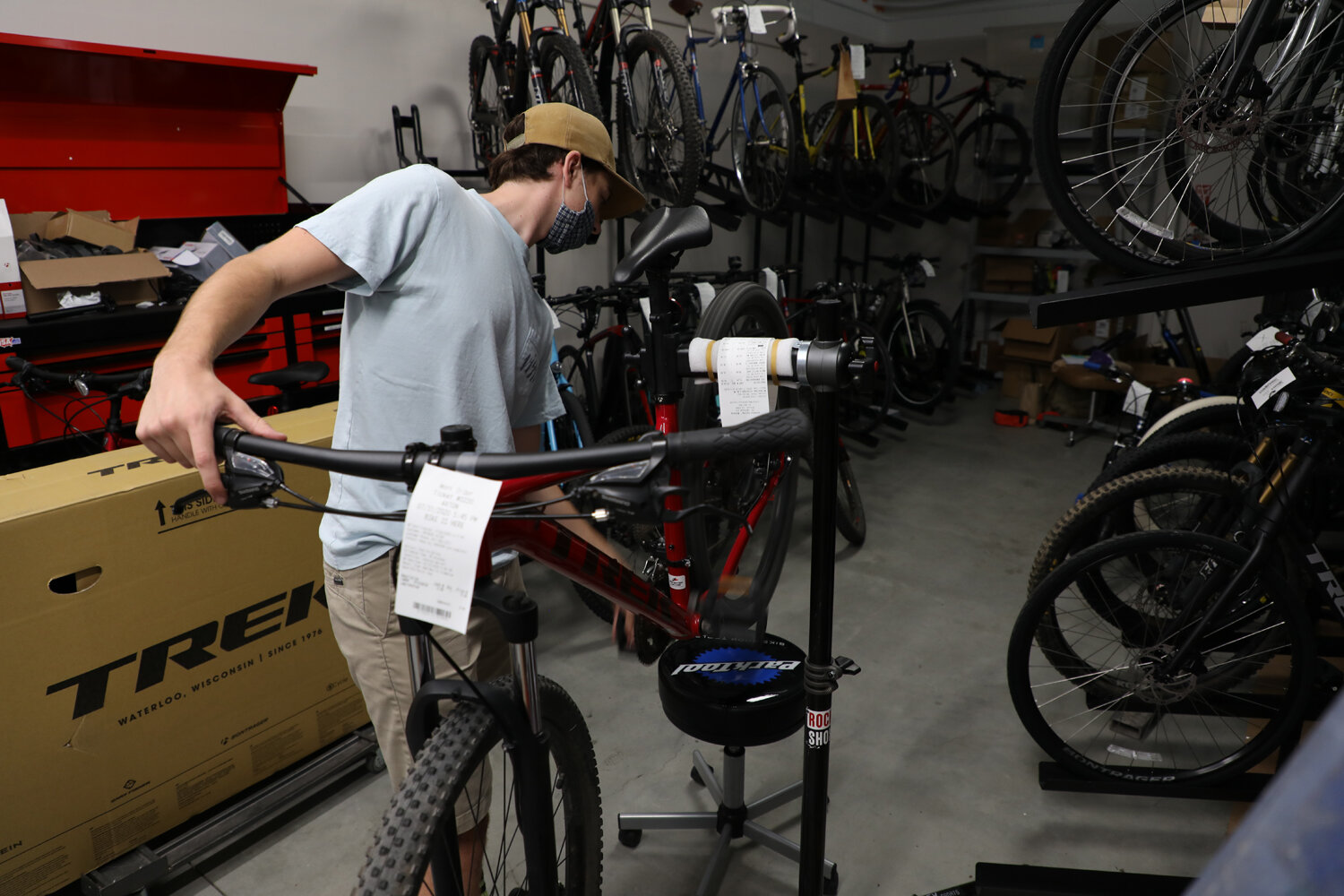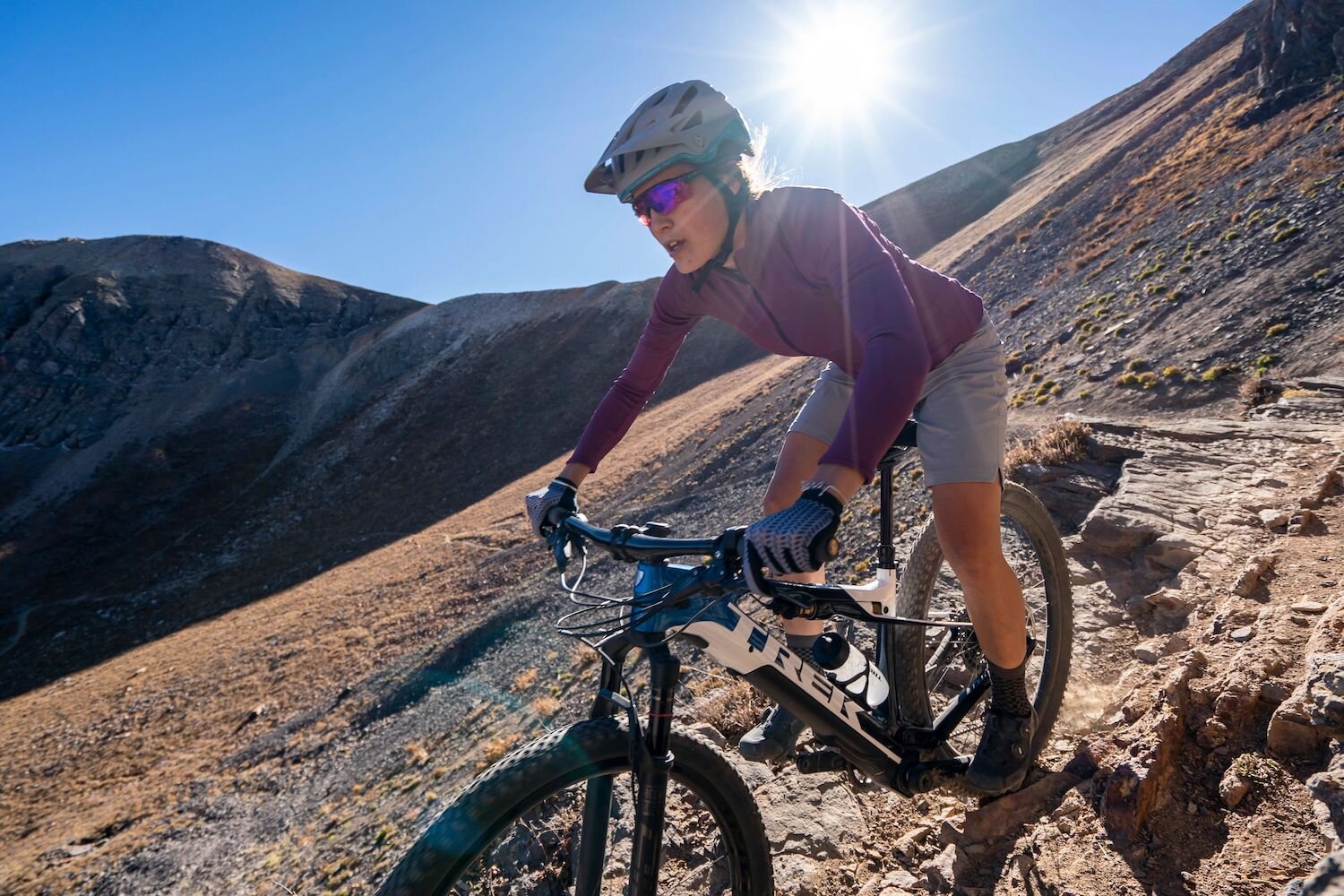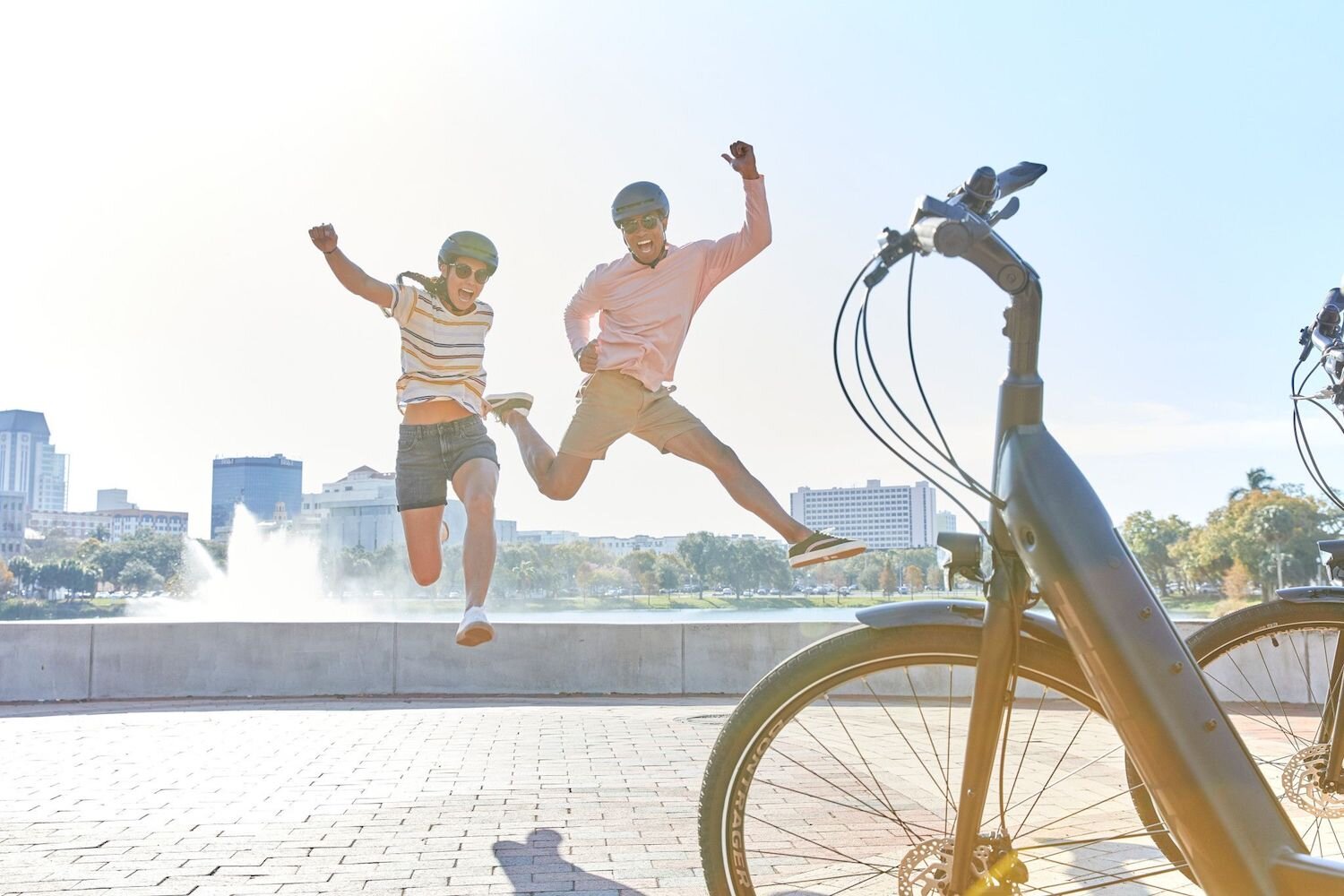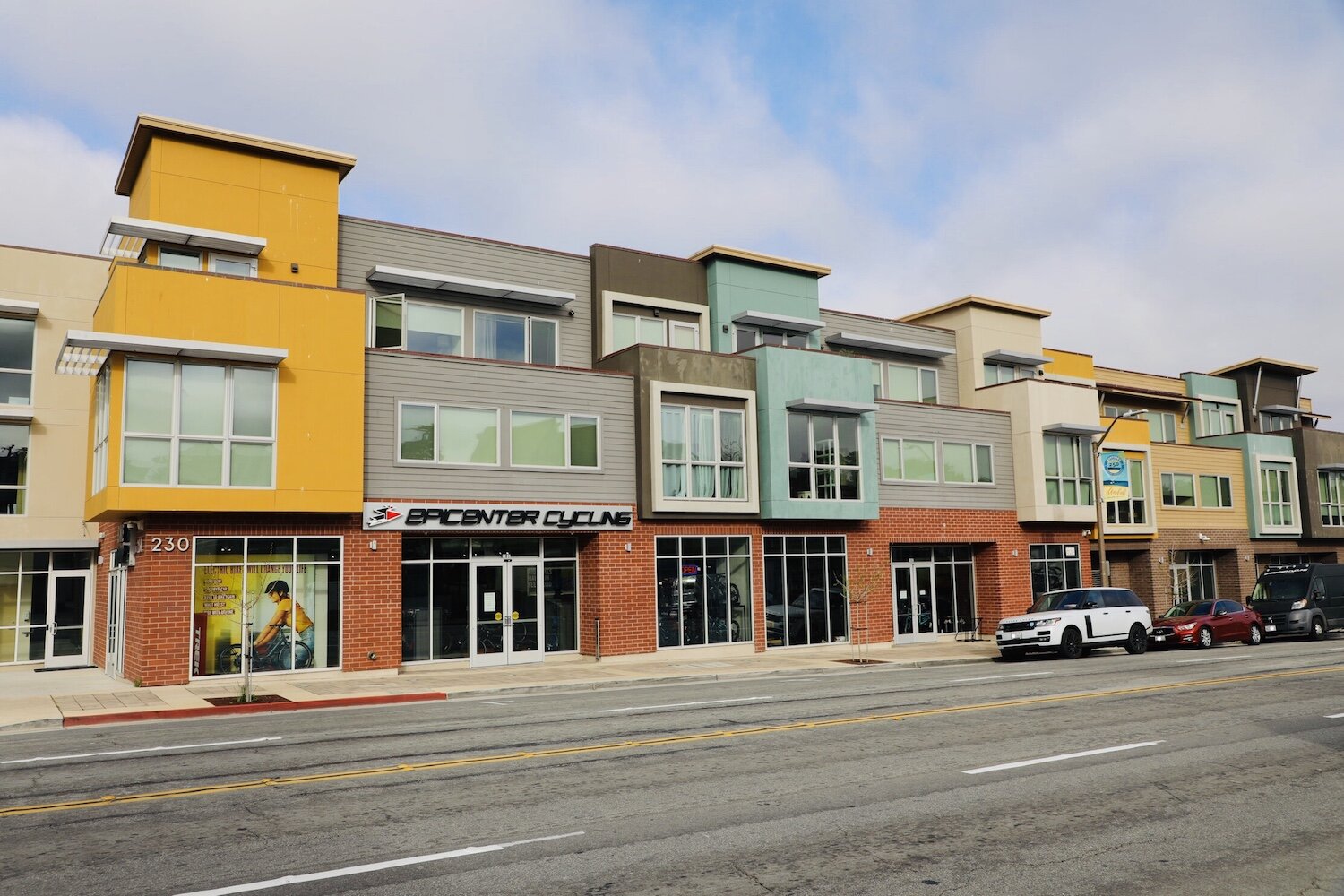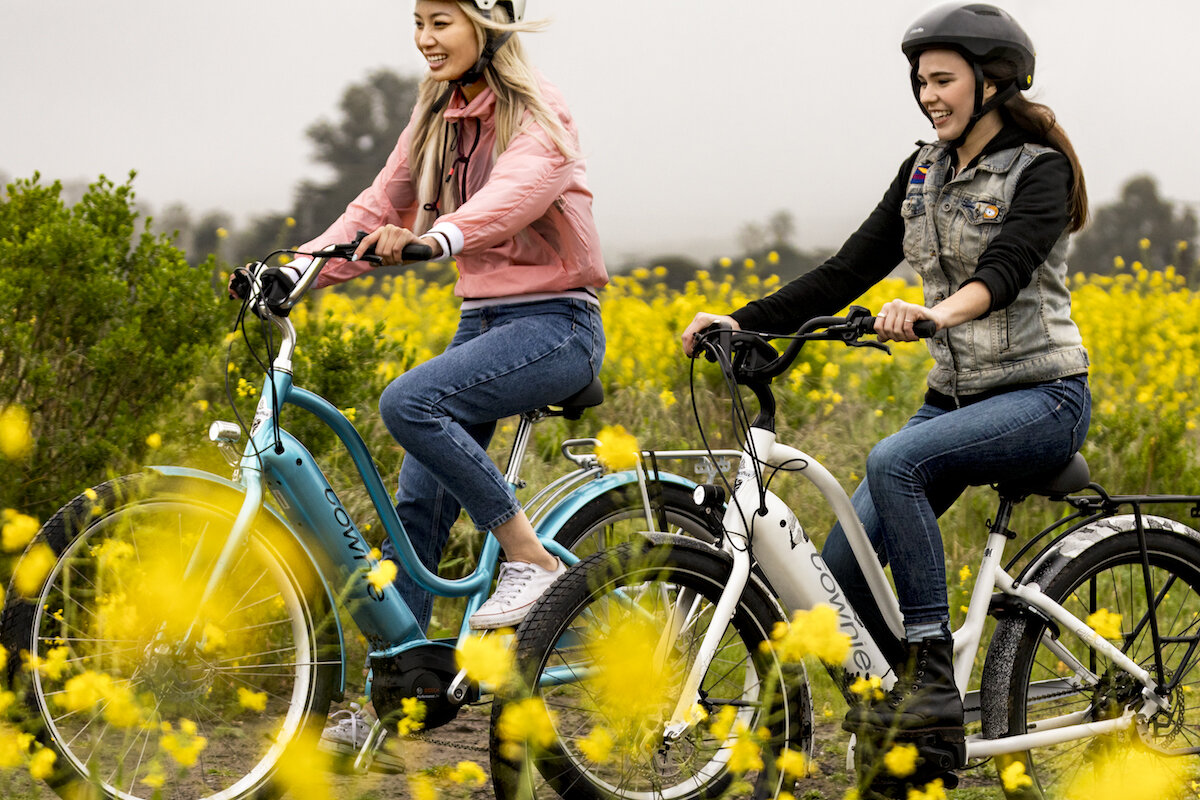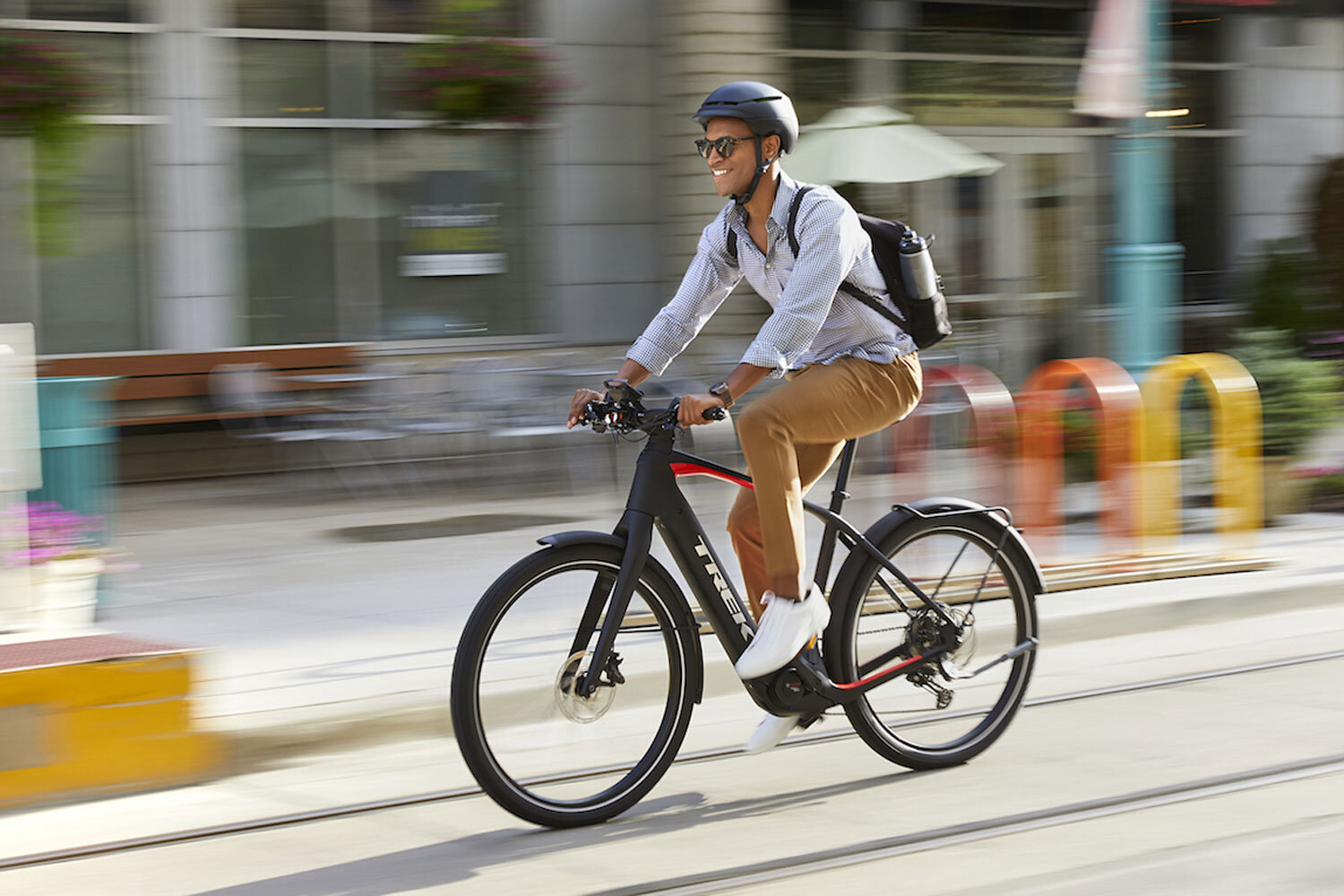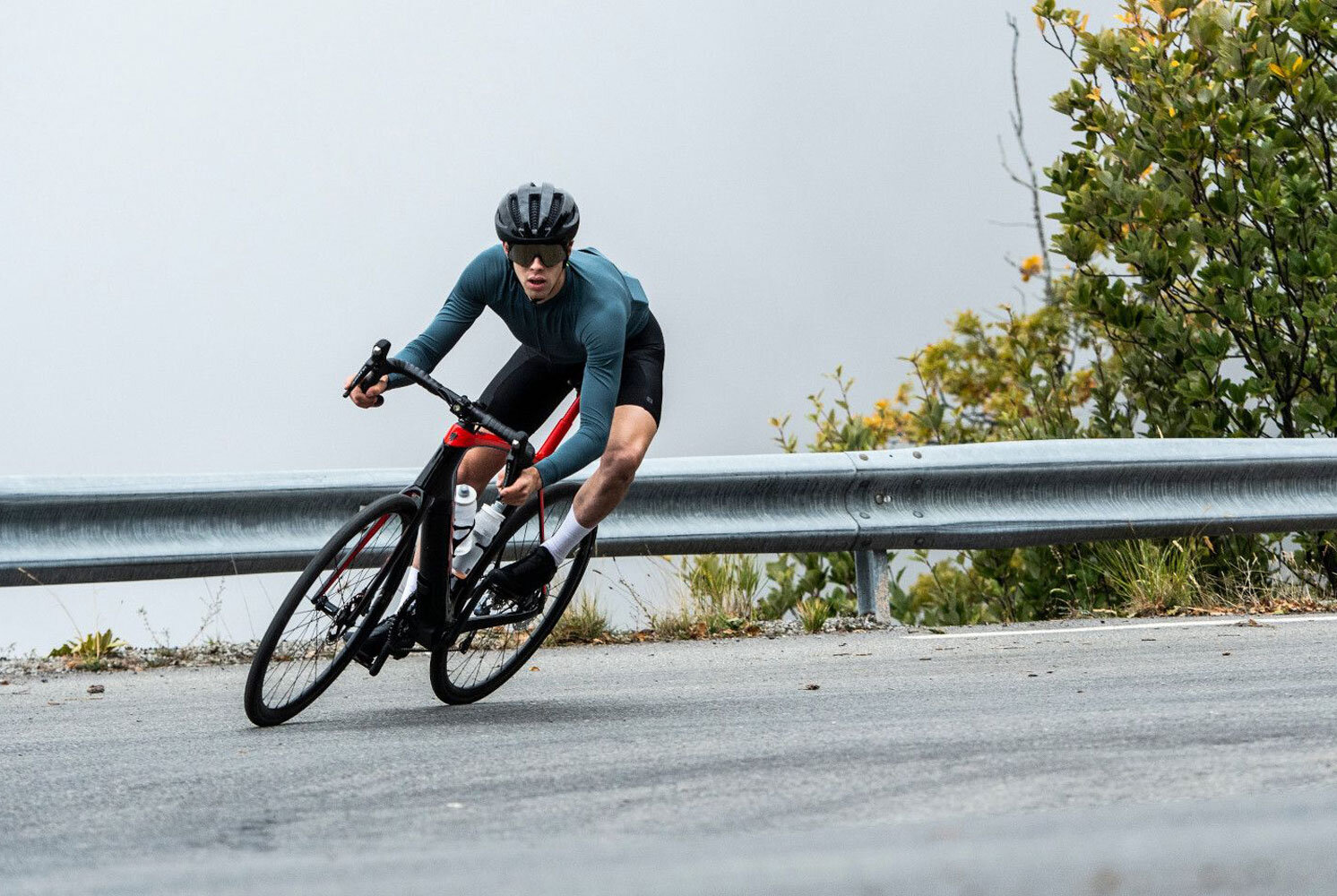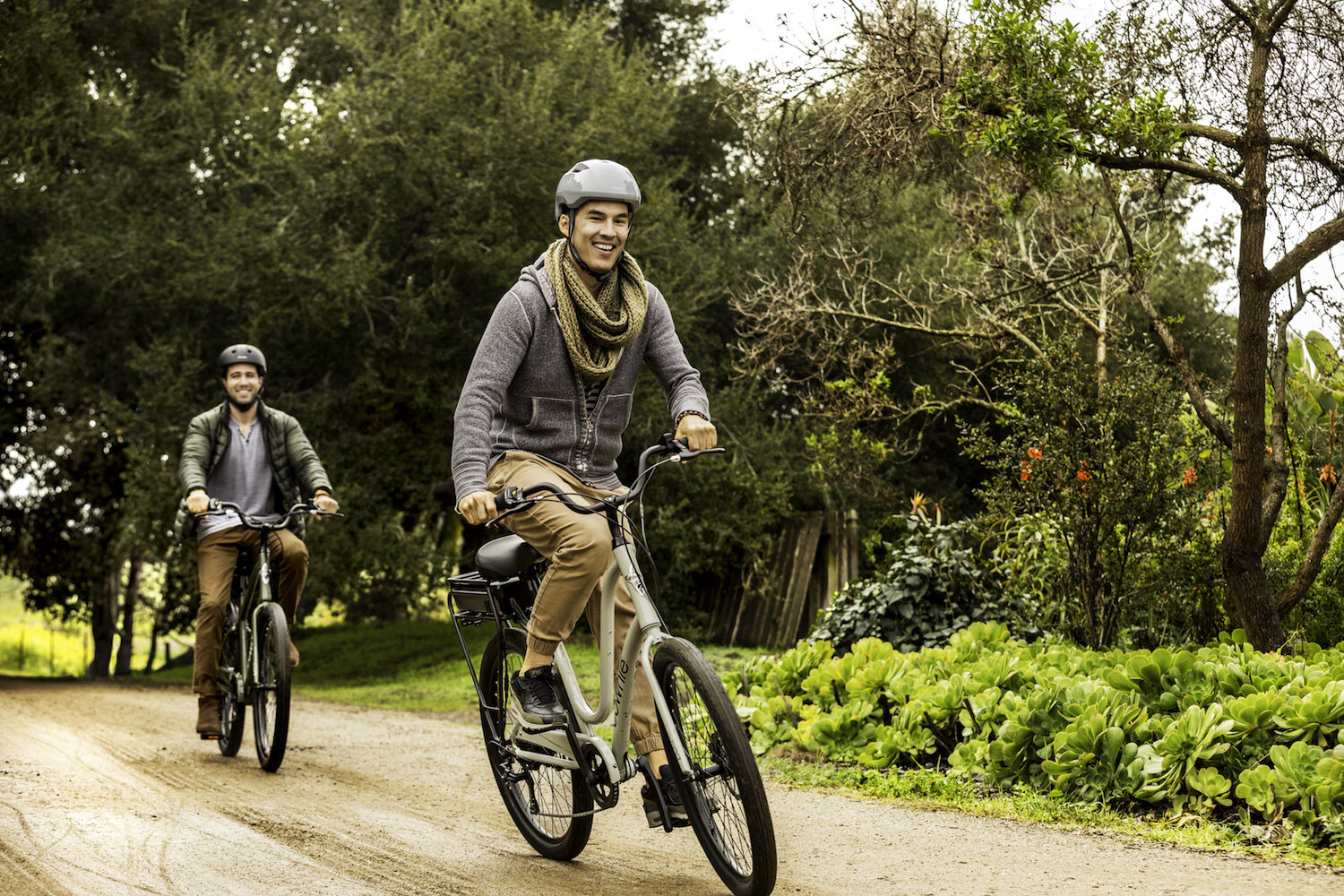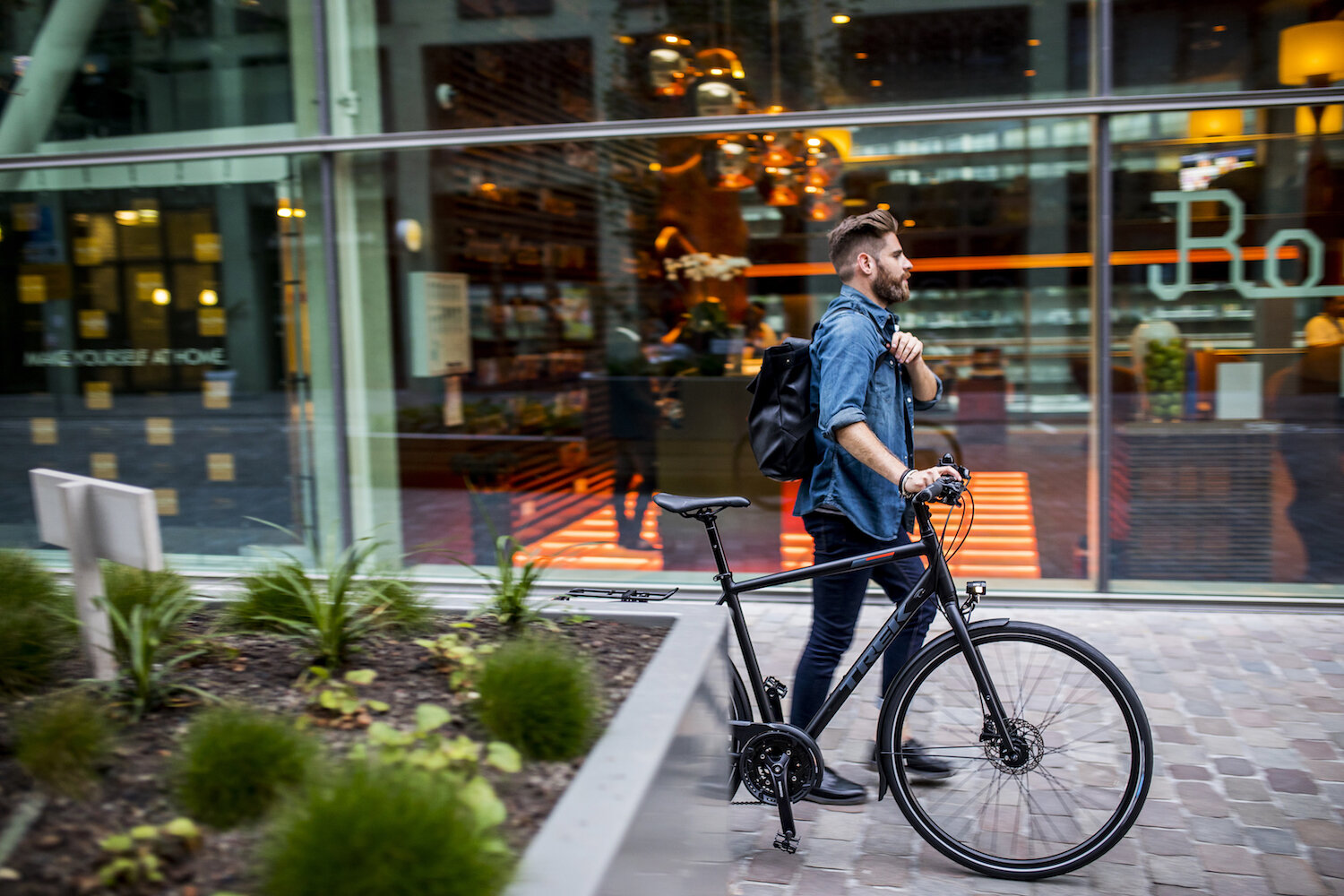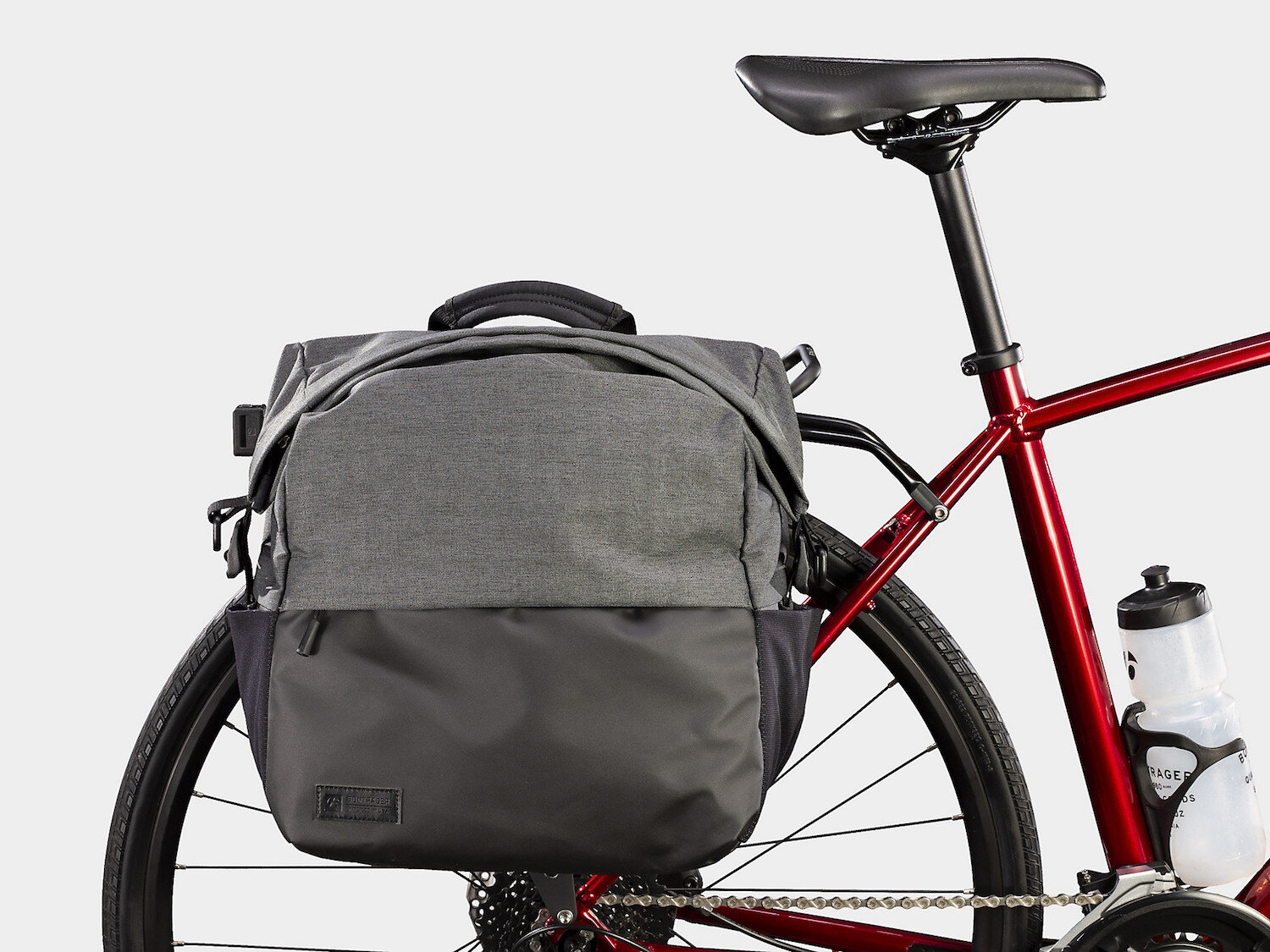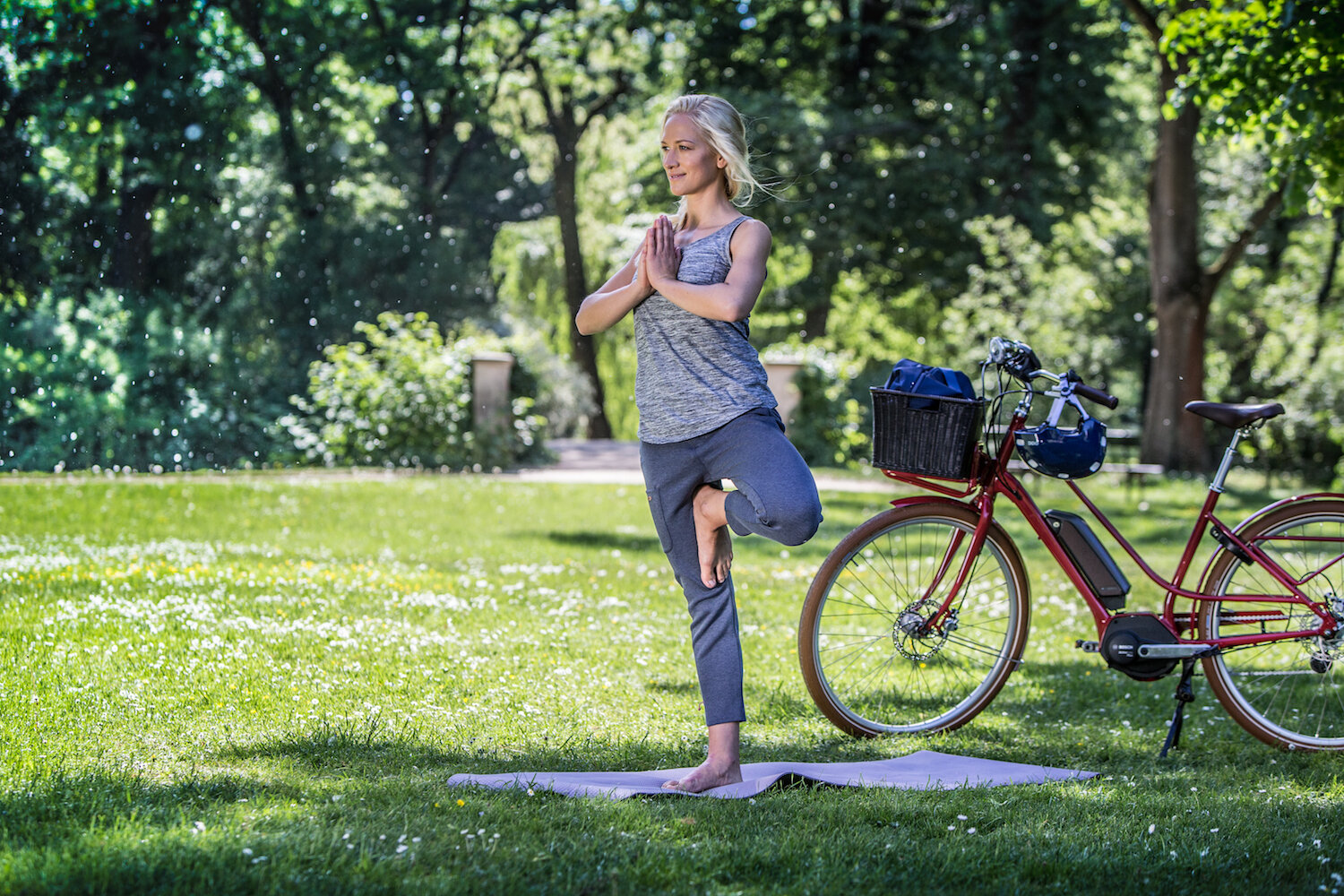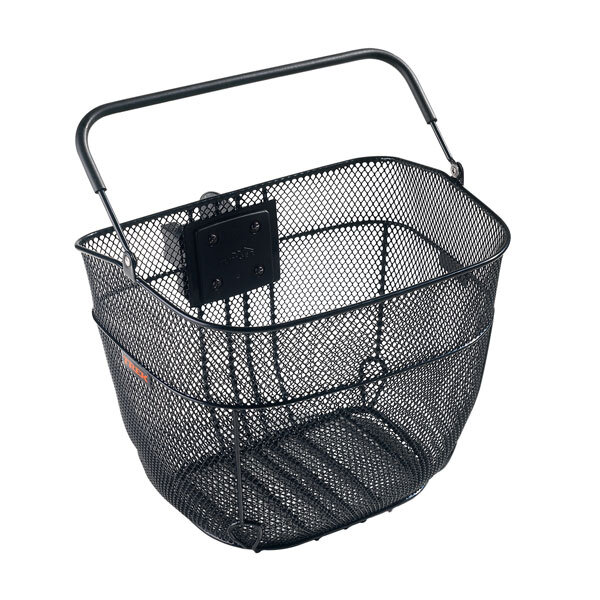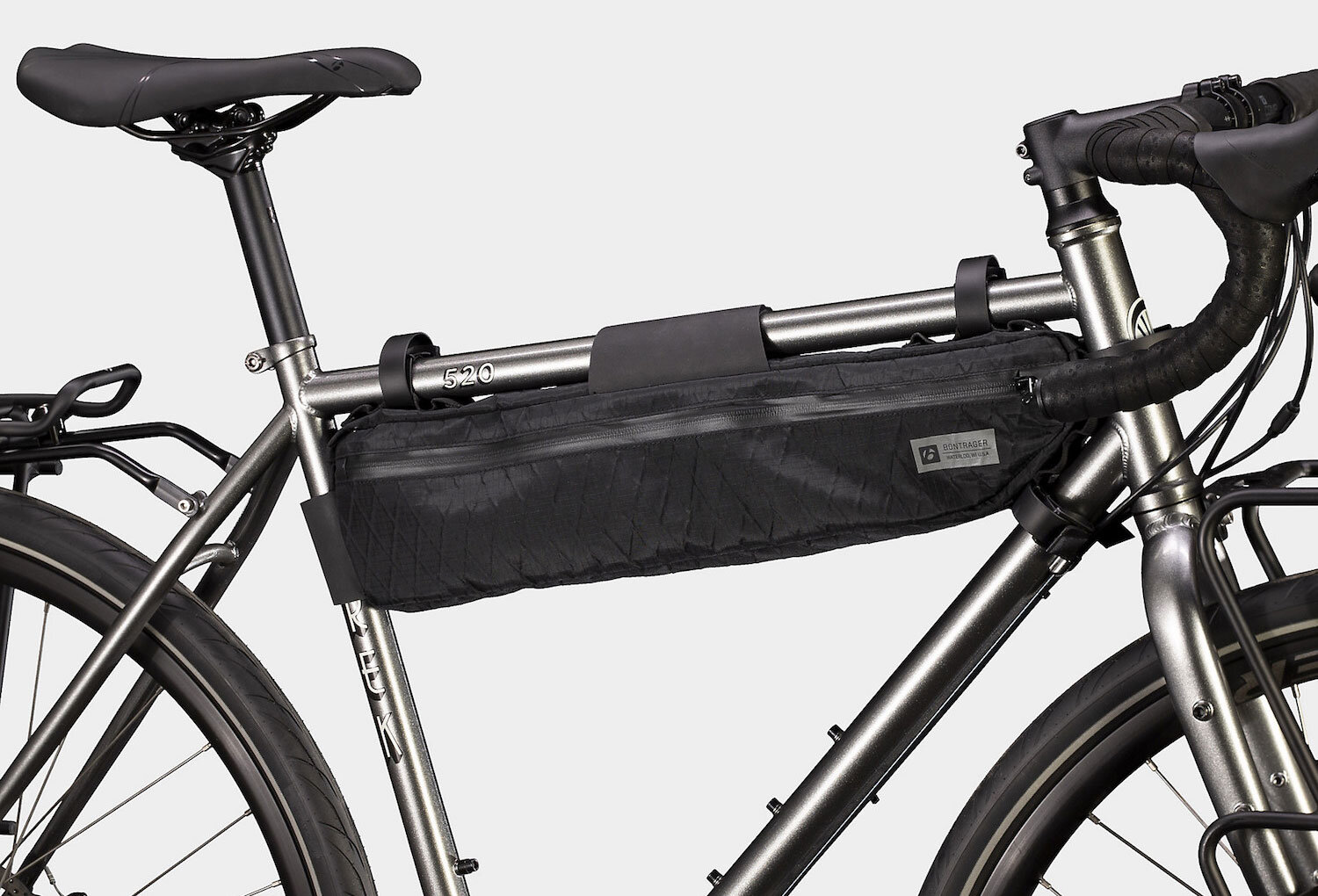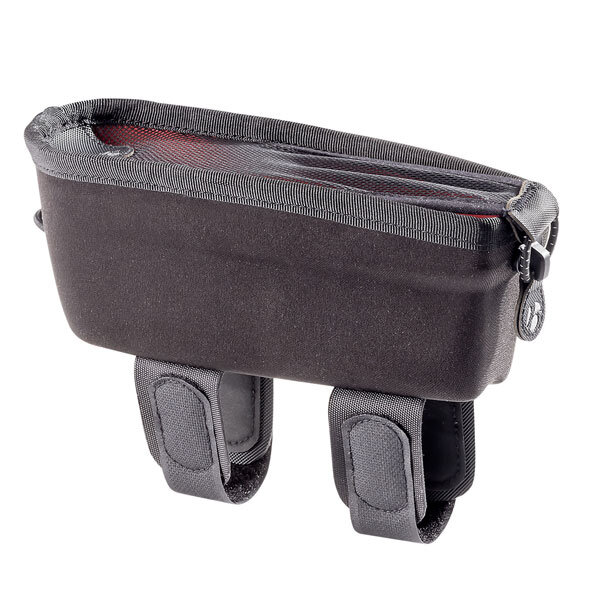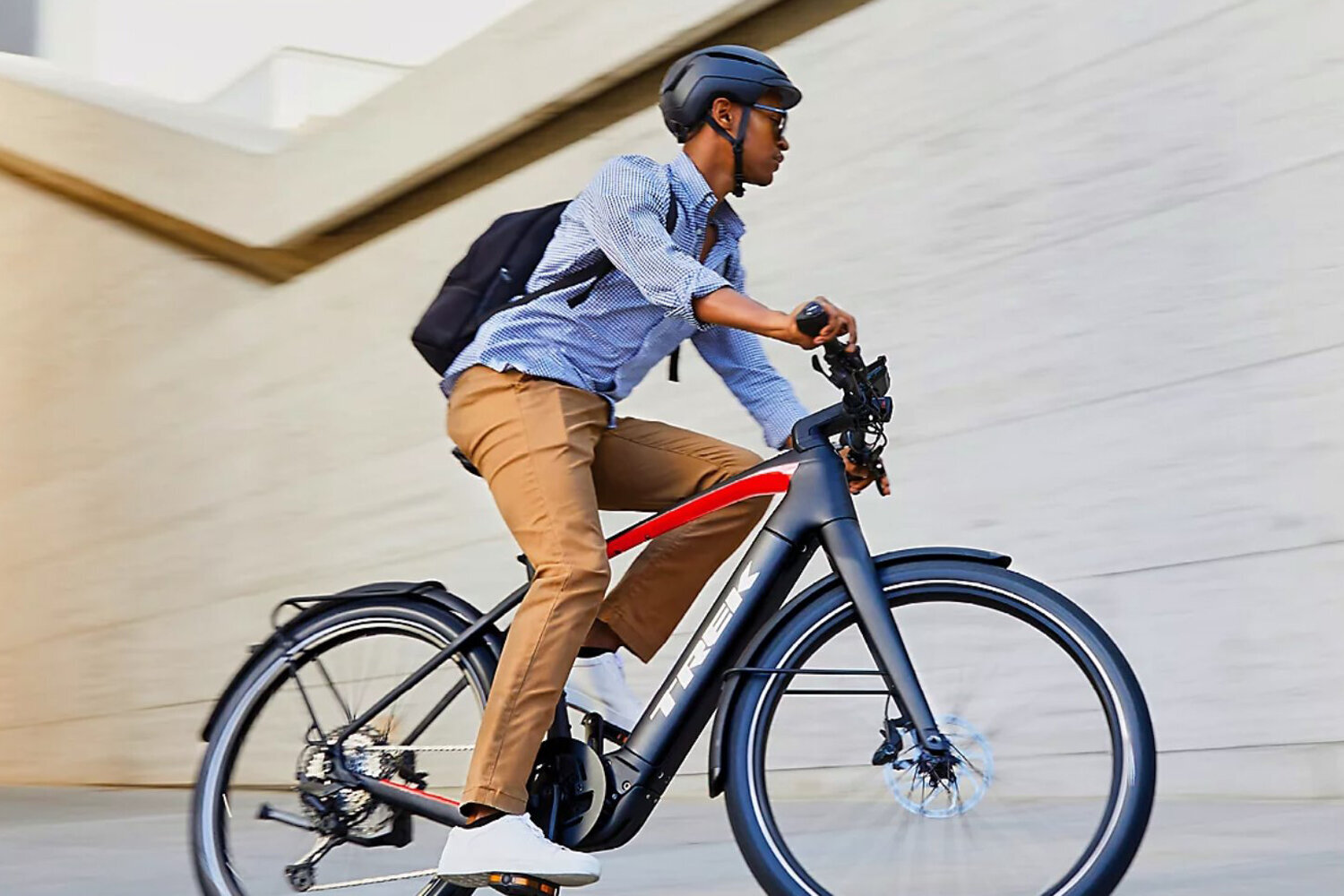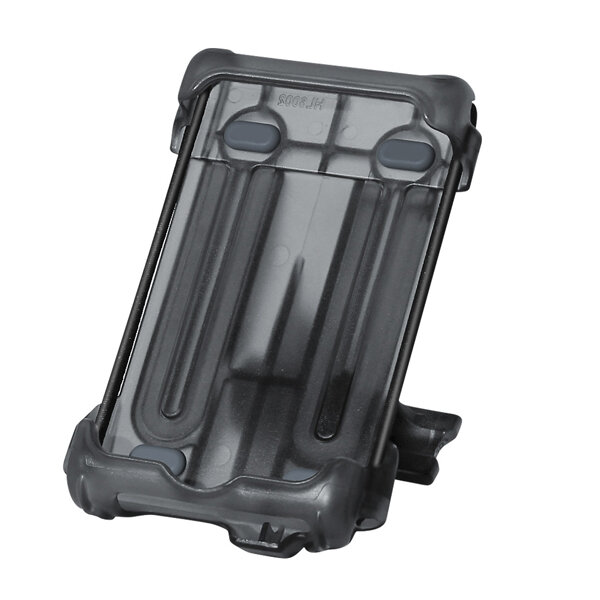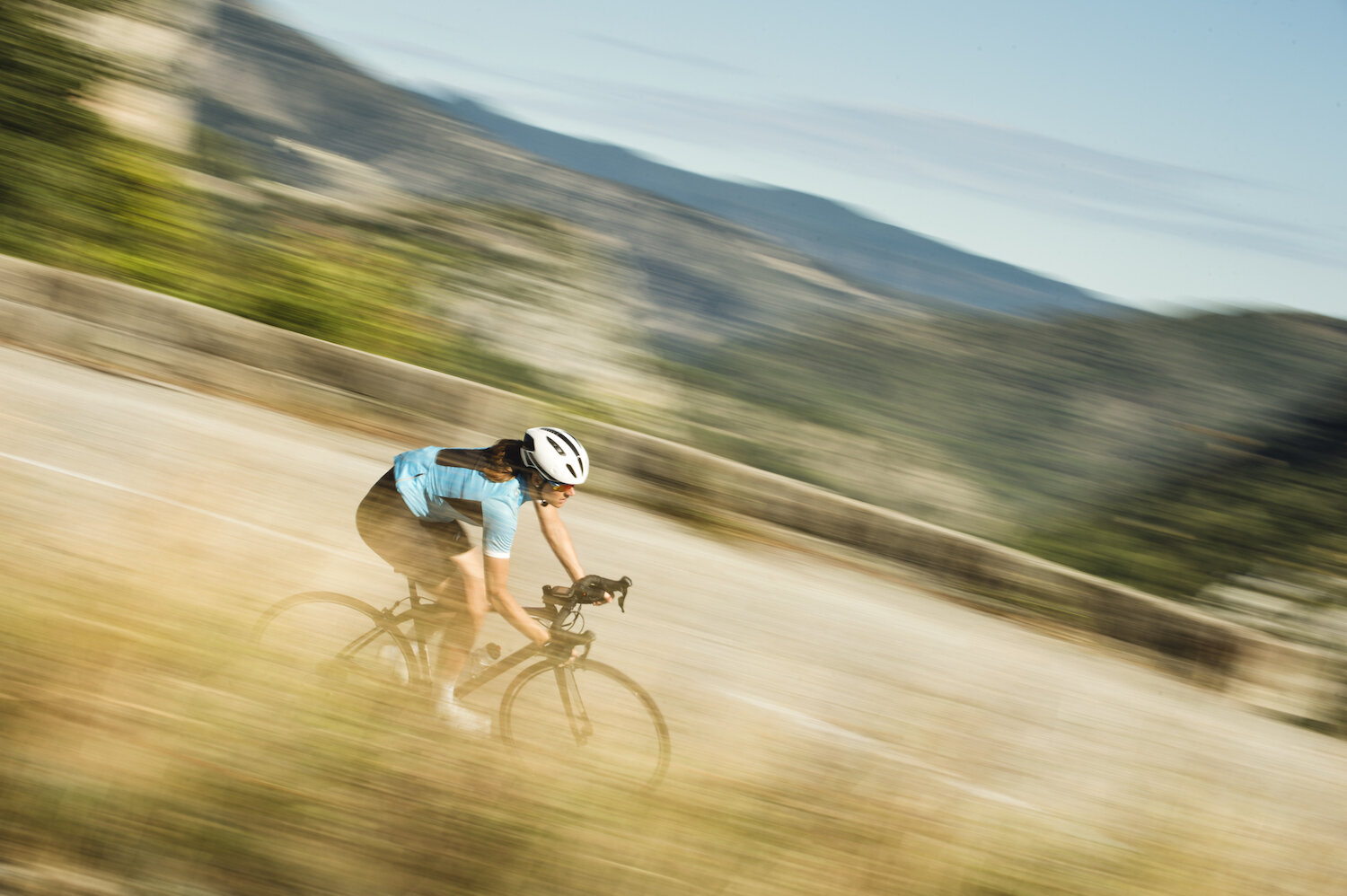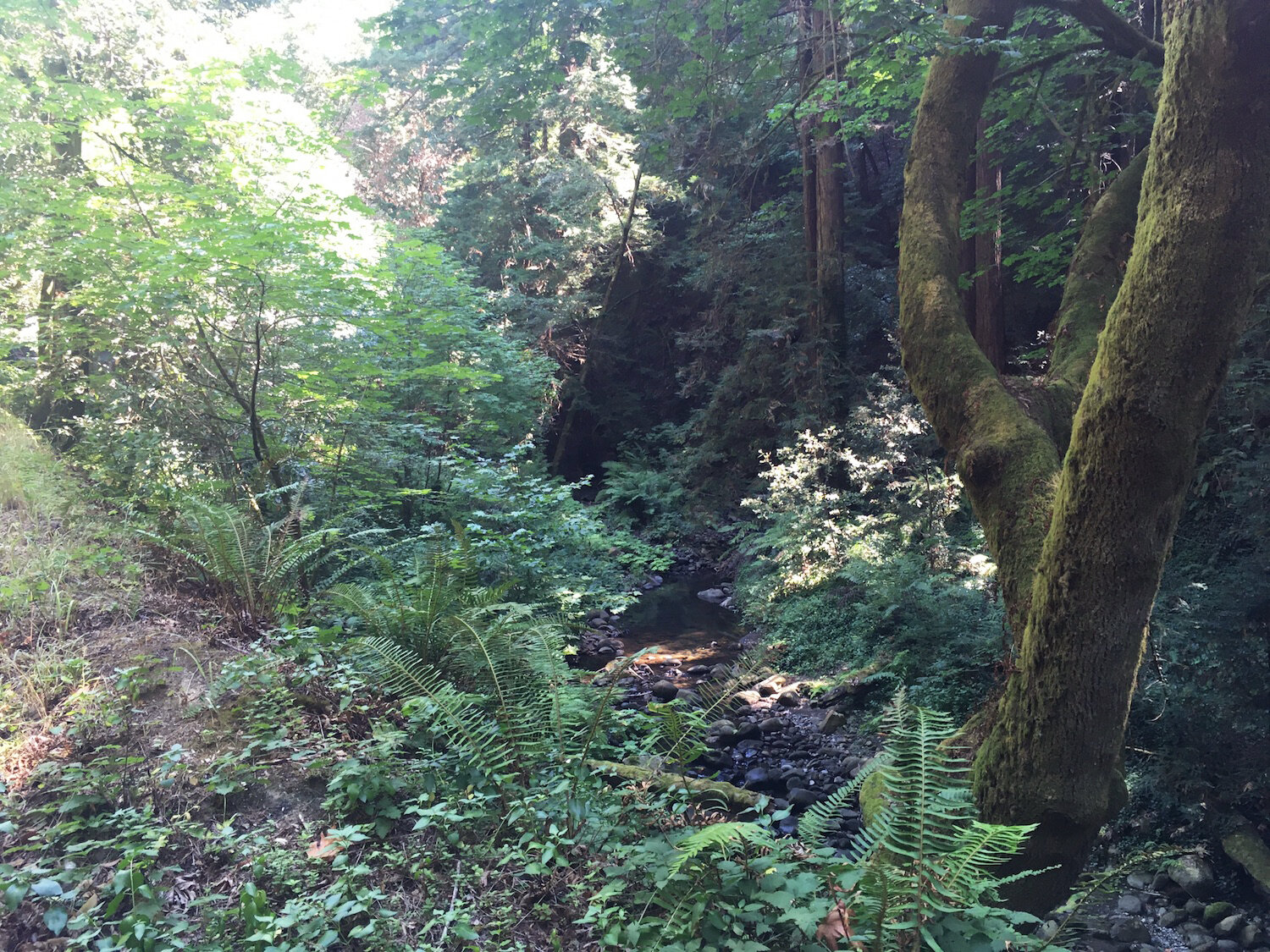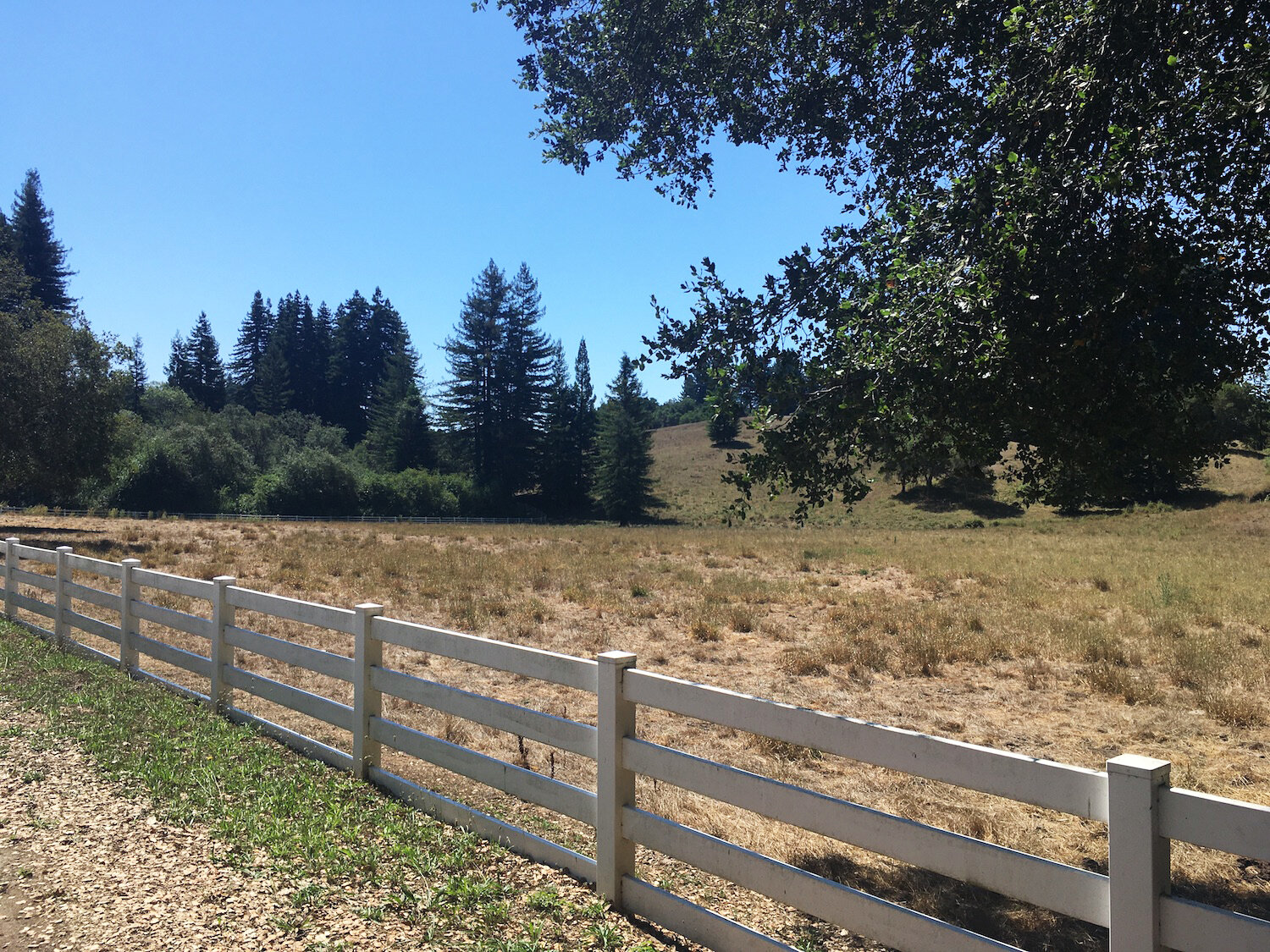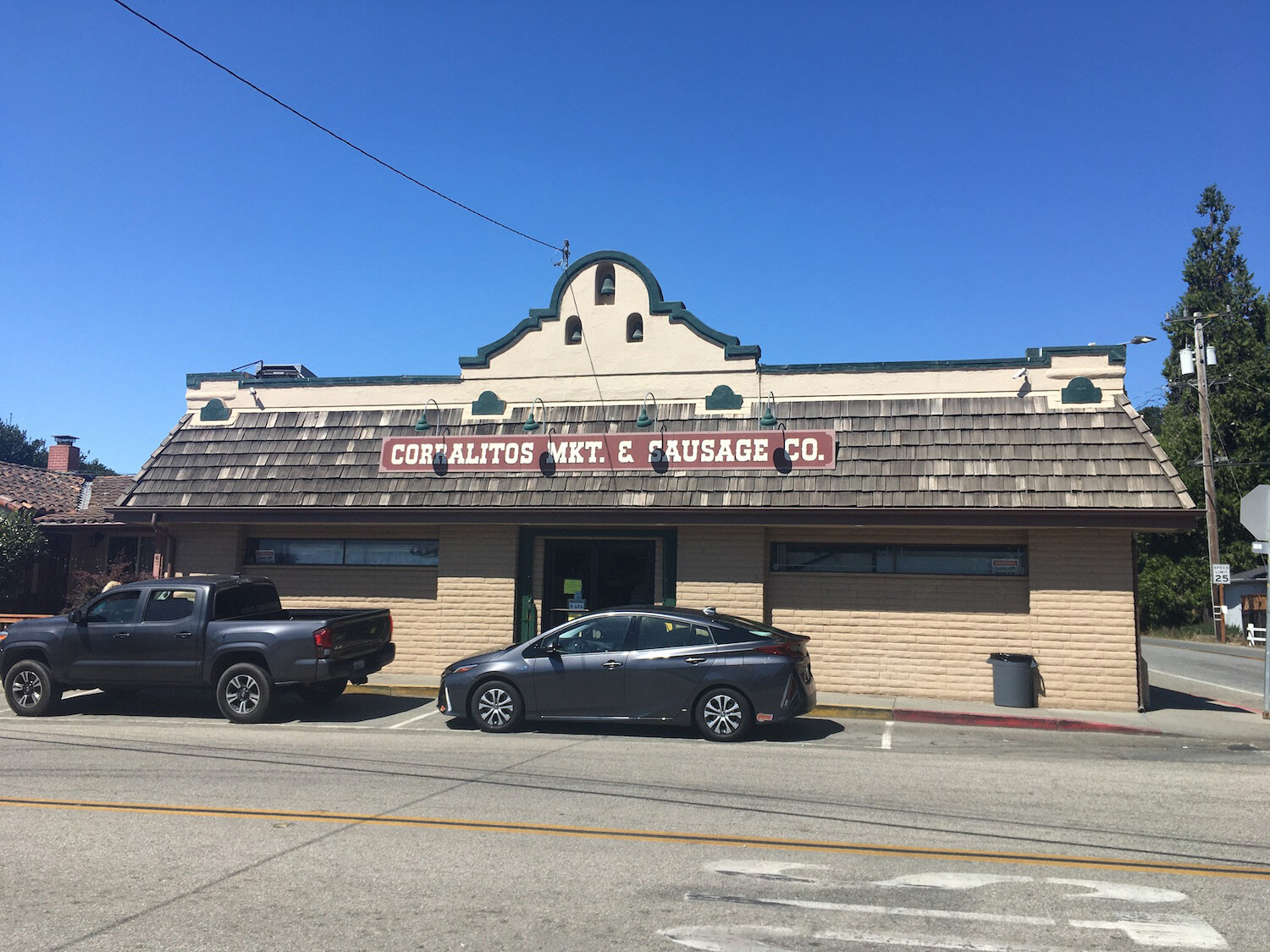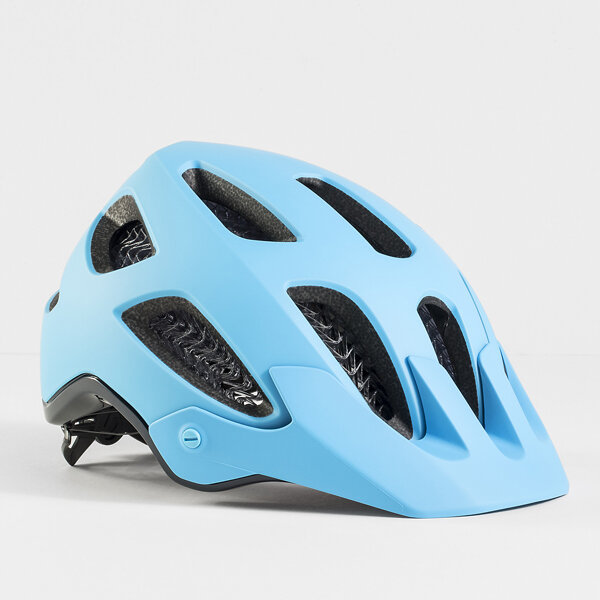The All-New Trek Checkpoint Gravel Bike is Here
Welcome to the Gravel Boom – are you ready for adventure?
More and more folks are discovering how gratifying biking on gravel roads can be. Whether you’re looking to race, bikepack, or simply explore your local back roads, there’s a Trek Checkpoint gravel bike that’s perfect for you. The Checkpoint can even double as a great everyday commuter bike!
The 2022 Checkpoint is designed to be agile yet durable with progressive geometry that offers superior comfort and capability.
All models feature integrated mounts for frame bags and fenders to make it easy to carry everything you need for epic adventures.
Internal cable routing keeps things neat and streamlined while plenty of clearance allows for knobby tires to smooth out rugged terrain.
Plus, all-new Flat Mount disc brakes are lighter and smaller than traditional disc brakes, and offer outstanding performance and stopping power for precise control.
Read on to learn about the various models in the Checkpoint lineup. No matter which model you choose, you can be assured that your Checkpoint will prove to be an exceptionally capable and comfortable ride.
Do it all with Checkpoint ALR
Checkpoint ALR 5 offers versatility and durability while being the most affordable model in the Checkpoint lineup. This do-everything bike can handle rugged exploration as well as smooth commutes. Its high-quality build features an alloy frame and GRX drivetrain, as well as the standard integrated mounts, internal cable routing, disc brakes, and more.
Go free range with Checkpoint SL
Checkpoint SL 5 is the next step up from the ALR model. A lightweight OCLV carbon frame and gravel-smoothing IsoSPEED decoupler offer the comfort you’re looking for on epic multi-terrain rides. From hours-long adventures to multi-day bikepacking trips, this is the bike for you.
Built-in storage compartment in the downtube lets you stow tools and gear; along with the standard mounts that allow you to load up all the gear you need. Its top notch build also features a GRX drivetrain, internal cable routing, and disc brakes. Plus … new for 2022: its dropper post compatible, too!
Go wireless with Checkpoint SL 6 eTap which boasts an upgrade to the smart and smooth SRAM Rival AXS wireless electronic drivetrain.
Take that upgrade even further with SL 7 eTap featuring a SRAM Force AXS wireless electronic drivetrain and Aeolus Pro 3V OCLV carbon wheels.
Put your race face on with Checkpoint SLR
Itching to test your mettle on a gravel race? Checkpoint SLR is the steed that will get you across the finish line. Its lightweight 700 Series OCLV Carbon frame boasts Checkpoint’s signature progressive geometry for agility and stability, plus IsoSpeed to smooth out the rough bits. Aeolus Pro 3V OCLV carbon wheels are also standard on all SLR models except SLR 9 eTap (which upgrades to Aeolus RSL 37V).
Checkpoint SLR 7 includes a Shimano GRX drivetrain that offers smooth shifting, while the standard mounts for gear and accessories lets you carry the nutrition and tools you’ll need to keep rolling.
Go wireless with SLR 6 eTap or SLR 7 eTap which upgrade respectively to the smart and smooth SRAM Rival and SRAM Force eTap AXS wireless electronic drivetrains.
Make the ultimate upgrade to SLR 9 eTap which features a Smart and smooth SRAM RED wireless electronic drivetrain PLUS Aeolus RSL 37V carbon wheels along with integrated mounts, internal cable routing, disc brakes, and other Checkpoint standard features.
Test ride the all-new Checkpoint now
Eager to explore rugged gravel and beyond on the all-new Checkpoint? Whichever model you throw a leg over – from ALR 5 through SLR eTap 9 – this gravel-grinding powerhouse promises the ultimate in rugged exploration.
Swing by any one of our three convenient locations in Santa Cruz, Aptos and Monterey (with a brand new location opening soon in Pacifica) to discover up close and personal just what everyone is raving about.

